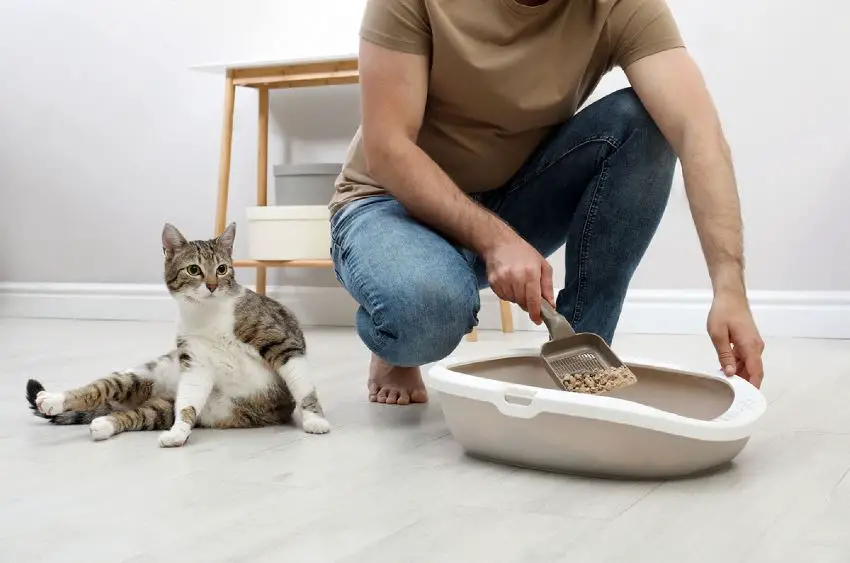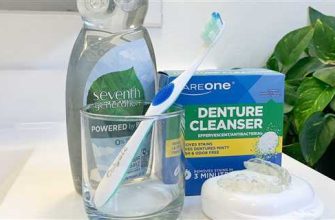
If your cat has worms, it is important to take immediate action to protect your pet and prevent the spread of the infestation. While most cats will show symptoms of a worm infection, some may not exhibit any signs at all. Therefore, it is crucial to maintain a clean and hygienic living space for both you and your cat. In this article, we will discuss the steps you can take to thoroughly clean your house and eliminate any worm infestations.
The first and most important step is to quarantine your cat indoors and away from other animals. Worms can easily be passed on to other pets, so it is crucial to keep your cat in a separate space during the treatment period. Make sure to provide a clean litter box and regularly clean it to prevent any accidental reinfections. Remember to wear protective gloves while cleaning the litter box and always wash your hands afterwards.
Once your cat is in quarantine, it’s time to start cleaning your house. Start by vacuuming all the floors and furniture, paying special attention to areas where your cat frequently rests or spends time. Use a vacuum cleaner with a high-efficiency particulate air (HEPA) filter to effectively capture any worm eggs or larvae that may be present.
After vacuuming, clean all hard surfaces with a disinfectant solution. Pay close attention to crevices and hidden corners, as worms and their eggs can survive in these spaces. Use a disinfectant that is safe for use around cats and follow the manufacturer’s instructions for dilution and application. Don’t forget to also clean your cat’s bedding, toys, and any other items that may have come into contact with the worms.
If your cat’s worms were caused by fleas, you will need to thoroughly clean your house to get rid of any flea infestations as well. Fleas can survive in your home for long periods of time, so it’s important to treat your house as well as your cat. Vacuum all carpets and upholstered furniture, and wash any bedding or fabric items that may have been infested. Use a flea treatment recommended by your veterinarian to eliminate any fleas that may be hiding in your home.
In conclusion, cleaning your house thoroughly is essential if your cat has worms. By following these steps and maintaining a clean living environment, you can help protect your cat from reinfection and ensure the health and well-being of everyone in your household.
- Clean Hard Surfaces
- Step 1: Put on Protective Gear
- Step 2: Clean Every Surface
- Step 3: Use Disinfectant
- Step 4: Pay Extra Attention to High-Risk Areas
- Step 5: Clean Carpets and Upholstery
- Step 6: Wash Fabrics
- Step 7: Clean Litter Boxes Regularly
- Remove Contaminated Bedding
- Vacuum Thoroughly
- Disinfect Litter Box
- Treat Your Cat and Consult a Vet
- Treating Your Cat
- Consulting a Vet
- Video:
- How to Treat Your Cat For Tapeworms | Simple Over the Counter Solution at Home without the Vet
Clean Hard Surfaces
If your cat has worms, it’s important to clean hard surfaces in your home to prevent the spread of infection. Follow these steps to effectively clean hard surfaces:
Step 1: Put on Protective Gear
Before you begin cleaning, put on rubber gloves and boots to protect yourself from any potential contamination.
Step 2: Clean Every Surface
Worm eggs and larvae can survive on hard surfaces, so it’s important to clean every surface your cat may have come into contact with. This includes countertops, floors, furniture, and any other hard surfaces in your home.
Step 3: Use Disinfectant
Use a disinfectant that is effective against roundworms and other common parasites. Make sure to follow the directions on the label for proper use.
Step 4: Pay Extra Attention to High-Risk Areas
High-risk areas for worm infestation are places where your cat spends most of their time. Focus on cleaning these areas thoroughly to prevent reinfection.
Step 5: Clean Carpets and Upholstery
Vacuum your carpets and upholstery thoroughly to remove any worm eggs or larvae that may be present. Consider using a steam cleaner or a carpet cleaner for a deep clean.
Step 6: Wash Fabrics
Wash any fabrics that your cat has come into contact with, including bedding, blankets, and toys. Use hot water and a detergent that is effective against parasites.
Step 7: Clean Litter Boxes Regularly
Clean your cat’s litter box every day to prevent worms from thriving in the feces. Use gloves and wash your hands thoroughly afterward.
It’s important to keep up with regular cleaning and hygiene practices for both you and your cat to reduce the risk of worms. Remember to seek proper treatment for your cat if they have been diagnosed with worms, and consult your veterinarian for advice on prevention and treatment.
Remove Contaminated Bedding
If you’ve discovered that your cat has worms, it’s important to take steps to clean your house and prevent further infestation. One of the first things you should do is remove any contaminated bedding.
1. Identify the contaminated areas: Start by identifying areas where your cat sleeps or spends a lot of time. This may include their bed, blankets, cushions, or any other cozy spots they frequent.
2. Gather the contaminated bedding: Carefully gather all the contaminated bedding and place it in a garbage bag. Be sure to wear gloves to avoid direct contact with the worms or their eggs.
3. Vacuum: Vacuuming the affected areas can help remove any remaining eggs or worms. Use a vacuum cleaner with a HEPA filter, which can effectively trap small particles and prevent them from being released back into your home. Pay extra attention to carpeted areas, as they can harbor more worms and eggs.
4. Wash the bedding: Depending on the care instructions, wash the contaminated bedding in hot water. Adding a cup of vinegar to the wash cycle can help kill any remaining worms or eggs, although you should use caution if the bedding has any delicate fabrics.
5. Clean the surrounding areas: Use a disinfectant cleaner to clean any surfaces near the contaminated bedding. This includes the cat’s sleeping area, as well as any furniture or flooring that may have come into contact with the worms.
6. Treat the litter box: Replace the litter in the cat’s litter box and wash it with hot, soapy water. This will help prevent the spread of worms and eliminate any remaining eggs or larvae.
7. Dispose of the contaminated bedding: Seal the garbage bag containing the contaminated bedding tightly and dispose of it properly. Do not place it in your regular trash bin, as it can create a health hazard for others.
8. Prevention: To make it easier to clean the bedding and prevent future infestations, consider using a waterproof mattress cover or a pet bed with a removable cover. This will make regular cleaning and treatment easier and more effective.
By following these steps and maintaining good hygiene habits, you can help keep your house clean and your cat’s health protected from parasitic infections.
Vacuum Thoroughly
One of the most important steps in maintaining cleanliness and preventing the spread of worms is to vacuum your house thoroughly. Worms shed eggs in the feces of infected animals, and these eggs can contaminate your carpets, rugs, and other surfaces in your home.
By vacuuming regularly and using a high-powered machine, you can remove any eggs or larvae that may be present in your carpeted areas. It’s also important to pay extra attention to areas where your cat spends a lot of time, as well as any areas where you suspect there may be stains or bloody spots.
If you have a particularly stubborn stain or spot, you may need to use a carpet shampooing machine to fully remove it. However, it’s worth noting that not all types of worms leave visible stains, so regular vacuuming is necessary even if there are no obvious signs of worms.
In addition to vacuuming, it’s also important to regularly wash your cat’s bedding and any other fabrics or furnishings that they come into contact with. This can help eliminate any eggs or larvae that may have been unintentionally brought into your home.
Remember, cleanliness is key to preventing the spread of worms, but it’s also important to follow proper deworming protocols for your cat. Consult with your veterinarian for the best treatment plan and follow their recommendations to ensure that your cat stays worm-free.
Disinfect Litter Box
If your cat has worms, it is essential to clean and disinfect the litter box to prevent the spread of parasites and ensure the well-being of your cat and the cleanliness of your home. Here are some steps to disinfect the litter box:
- Remove all litter: Start by emptying the litter box completely. Scoop out all the used litter and dispose of it in a trash bag.
- Clean the litter box: Use a mild detergent and warm water to thoroughly clean the litter box. Scrub the box to remove any residue or feces that may be stuck to the surface. Rinse it well with clean water.
- Disinfect the litter box: To kill any remaining parasites or eggs, disinfect the litter box with a solution of bleach and water. Mix one part bleach with ten parts water and use a sponge or cloth to wipe the entire box. Let the solution sit for a few minutes before rinsing it off.
- Dry the litter box: After rinsing off the disinfectant solution, dry the litter box thoroughly. You can use a towel or let it air dry.
- Replace the litter: Once the litter box is completely dry, add fresh litter to the box. Make sure to use a high-quality litter that clumps well and is easy to clean.
It is also important to regularly clean and disinfect the litter box even if your cat does not have worms. This helps maintain a clean and healthy environment for your cat. Some cat owners prefer to have multiple litter boxes to make the cleanliness process easier. Additionally, keeping the litter box in a well-ventilated area and away from food and water bowls can help prevent the spread of parasites.
If your cat has worms, it is crucial to seek proper veterinary treatment as soon as possible. Worms can cause serious health issues such as anemia and even death if left untreated. Your veterinarian will be able to diagnose the type of worms and provide the appropriate treatment.
Remember, cleanliness and preventative measures are key to keeping your cat and home worm-free. Regularly deworming your cat and maintaining good hygiene practices will help prevent future infestations. If you are unsure about the cleanliness of your home or want to ensure optimal cleanliness, you may want to invest in a steam cleaning machine for a deep clean.
Treat Your Cat and Consult a Vet
Once you have discovered that your cat has worms, it is important to take immediate action to treat the infestation. This involves a combination of treating your cat directly and seeking professional advice from a veterinarian.
Treating Your Cat
- Start by taking your cat outdoors. Limiting her access to the outside can help prevent reinfection.
- Use a different litter box for your cat while she is being treated. This will help avoid contamination of the environment.
- Thoroughly clean and disinfect surfaces, equipment, and toys that your cat may have come into contact with.
- When cleaning, use caution and wear gloves. Scrub all surfaces to ensure you rid them of any potential worm eggs or larvae.
- Dispose of all waste, including cat feces and any contaminated materials, in a sealed bag and place it in the trash.
- Consider upgrading your cat’s diet to one that includes a deworming preventative. Consult with your vet about suitable options.
Consulting a Vet
It is crucial to consult a veterinarian when your cat has worms. A vet can provide professional advice tailored to your cat’s specific needs.
- Explain the situation to the vet and provide any relevant information about the worms your cat has been experiencing.
- Follow the vet’s instructions regarding the treatment and deworming medication your cat should receive.
- Ask about any preventative measures you can take to reduce the risk of future worm infections.
- If your cat has been harmed by the worms, or if you are unsure about how to proceed, ask the vet for guidance on the best course of action.
- Regularly schedule vet check-ups to monitor your cat’s health and ensure that she remains protected against worms and other illnesses.
Remember, treating your cat for worms is not just about getting rid of the visible symptoms. It is about ensuring your cat’s well-being and preventing any potential harm. By taking the appropriate steps and seeking professional attention, you can effectively combat and manage your cat’s wormy situation.








